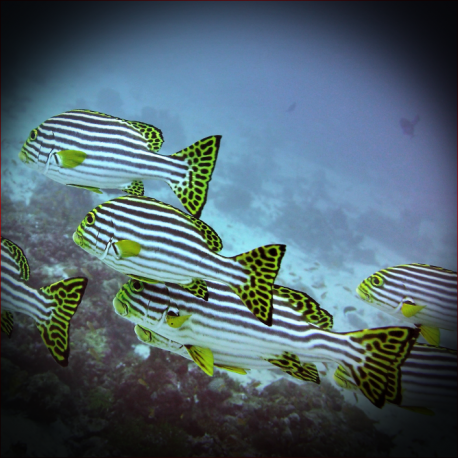More info
Datasheet
| Minimum Tank Size | 2000 litres / 528.34 US gallons |
| Maximum Size | 72.0cm / 28.35inches |
| Reef Compatible | Reef safe with caution |
| Temperament | Docile |
| Temperature | 22.2°C / 71.96°F - 25.6°C / 78.08°F |
| Specific Gravity | 1.020-1.025 |
| Carbonate Hardness | 8-12 |
| pH | 8.1-8.4 |
General Description:The Indian Ocean Oriental Sweetlips, scientifically known as Plectorhinchus vittatus, boast a brown coloration with white spots rimmed in yellow during their youth. However, these markings transform into white/blue hues with black stripes as they mature. In adulthood, their fins showcase a vibrant yellow hue, creating a striking appearance. The debate continues on whether P. orientalis represents a distinct species or serves as a synonym for this particular species.
Aquarium Suitability:For aquarists considering the Indian Ocean Oriental Sweetlips, experience, preparation, and an extra dose of care are imperative. These fish require a very large tank, with a minimum volume of 2000 liters when fully grown. Due to their delicate nature and specific dietary demands, they pose a challenge to maintain in home aquariums. Furthermore, their rapid growth rate, predatory behavior towards small fish and invertebrates, and their need to forage through sand for sustenance make them a complex species to house.
Care and Hardiness:These Sweetlips necessitate frequent feedings to thrive, particularly when newly introduced into the aquarium. Their natural preference for live food, along with a varied diet, is crucial for their well-being. They are regarded as shy and docile creatures, suggesting caution when housing them with more aggressive tankmates. Due to their substantial appetite, a tank capable of supporting such a heavy bioload is essential. Additionally, providing ample hiding spots, such as among live rocks, is vital for their security and well-being.
Reef Suitability:The Indian Ocean Oriental Sweetlips are considered reef-safe with caution, as they may exhibit predatory tendencies toward smaller reef inhabitants. Aquarists must monitor their interactions within a reef setting to prevent any harm to the delicate ecosystem.
Aquarium Setup:Setting up an aquarium for the Indian Ocean Oriental Sweetlips demands meticulous attention to detail. The tank should feature live rocks and numerous hiding spots to mimic their natural habitat. Maintaining pristine water quality is essential, given their sensitivity to environmental changes. An array of suitable hiding places and ample swimming space are essential elements for their physical and mental well-being.
Behaviour:These fish exhibit docile behavior, emphasizing the need for a peaceful tank environment. Their tendency to forage through sand can inadvertently lead to cloudy water conditions, necessitating proper filtration and maintenance routines to sustain a healthy aquatic environment.
Feeding and Diet:A well-rounded diet for the Indian Ocean Oriental Sweetlips consists of fish, larger crustaceans like shrimp and crabs, other invertebrates, and small crustaceans such as krill, mysis, and artemia. Regular feedings throughout the day, especially during the acclimation period, are essential for their nutritional needs and overall health.
Habitat and Distribution:These captivating fish are native to the Indo-West Pacific region, spanning from East Africa to the western Indian Ocean, and extending to Papua New Guinea and New Caledonia. Their natural habitat includes a diverse range of marine environments with ample food sources to support their predatory nature.

